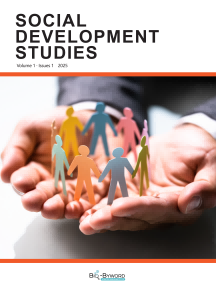The Possibility of Social-cultural Creativity Education: A Case Study of “Imaginative Innovator” at H University
Abstract
As the fourth industrial revolution accelerates, universities have made great efforts to develop and reform creative convergence courses for improving the students’ creative convergence capabilities. Although various subjects such as “Capstone” and “Design Thinking” to the improvement of students' creative convergence competences, many courses focus on creativity education in the direction of creating new products or outputs such as engineering, design, and art, so there is still a lack of systematic education and subjects on creative convergence capabilities from a humanities and sociological perspective. In order to overcome their limitations of creative courses, “H” University developed a 'Imaginative Innovators' class with the purpose of solving creative problems on social issues related to sciences, culture, politics, economics, and so on. In this study, we introduced the purpose, methodology, students’ best practices etc. of the “Imaginative innovator” course. In addition, we discussed the limitations and complements as well as the advantages and possibilities of the course. These findings are expected to contribute to the development and expansion of creativity education.
References
Jung Y, 2018, “A Study on the Operation of Creative Learning Courses Based on Self-Directed Learning. Focusing on the case of creativity challenge and self-development,” Liberal Arts Education Research, Vol. 12, No. 6, 95-114.
Lee K, Yoo KH, and Kim EK, 2010, “University students' perceptions of creativity education,”Educational Psychology Research, Vol. 24, No. 2, 327-346.
Min CK, 2019, “Instructional practices and improvement directions for fostering college students' creativity,” Liberal Arts Education Research, Vol. 13, No. 4, 121-142.
Lee H, 2017, “Development of a University Creativity Education Program with a Liberal Education Approach,” Liberal Education Research, Vol. 11, No. 6, 333-358.
Choi IS, Lee HS, Lee EH, 2012, and Kim SJ, “An Analysis of the Current Status and Content of Creativity Courses in Korean Universities: Focusing on Top 30 Universities,” Curriculum Research, Vol. 30, No. 2, 179-199.
Kim JY, Tae JM, 2017, “Comparison and Analysis of Differences in College Students' Creative Convergence Competencies for Developing Creative Convergence Courses,”Journal of Integrated Curriculum, Vol. 11, No. 4, 145-164.
Lee HS, Choi IS, 2014, “The direction of creativity education in university liberal arts education,”Creativity Education Research, Vol. 14, No. 2, 1-17.
Park SH, 2019, “A Study of College Students' Perceptions of Creativity and Creativity Education,” Journal of Research Methods, Vol. 4, No. 3, 33-62.
Kim H, 2018, “Design and operation of liberal arts courses to enhance college students' creativity,”Creativity Education Research, Vol. 18, No. 4, 91-114.
U. Bronfenbrenner, 1994, “Ecological models of human development,”Readings on the Development of Children, Vol.2, No.1, 37-43.
Montogmery D., Bull K. S., and Baloche L.,1992, “College level creativity course content,”Journal of Creative Behavior, Vol.26, No.4, 228-234.
Rhodes M., 1961, “An Analysis of Creativity,” The Phi Delta Kappan, Vol.42, No.7, 305-310.
Jang JY, Park JY, 2007, The Psychology of Creativity Under My Hat, Gasan Publishing House.
Lim J, 2020, “Exploring the Applicability of Team Teaching Method for Revitalizing University Convergence Education,”Educational Innovation Research, Vol. 30, No. 3, 23-51.
Ajares F. and Miller M. D., 1994, “Role of self-efficacy and self-concept beliefs in mathematical problem solving: A path analysis,” Journal of Educational Psychology, Vol.86, No.2, 193-203.
Jung MH, Neu S, 2004, “Effects of project class on improving creative thinking, creative disposition, and problem-solving ability of college students,”Educational Psychology Research, Vol. 18, No. 3, 287-301.

